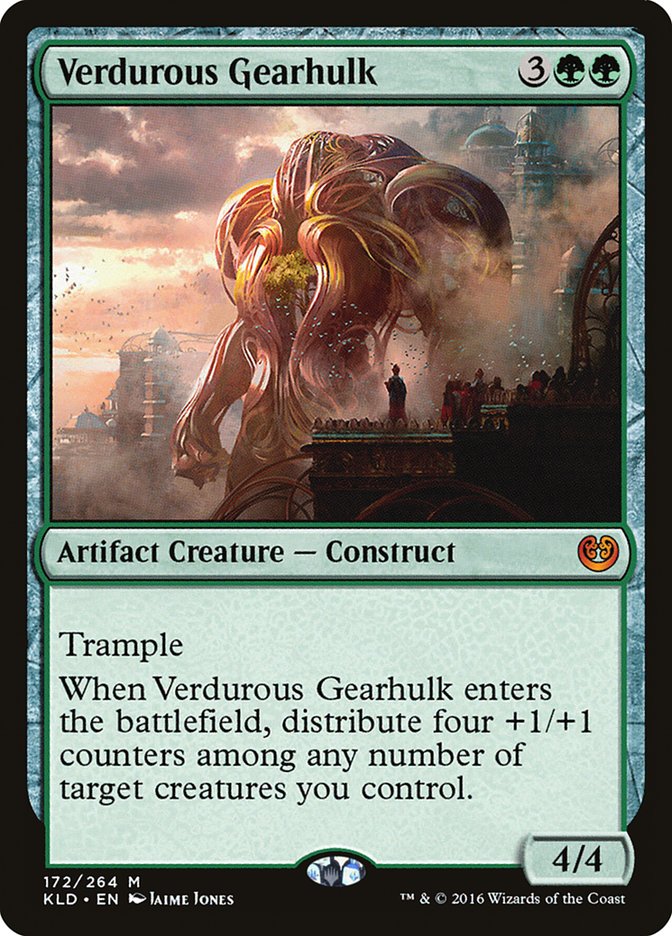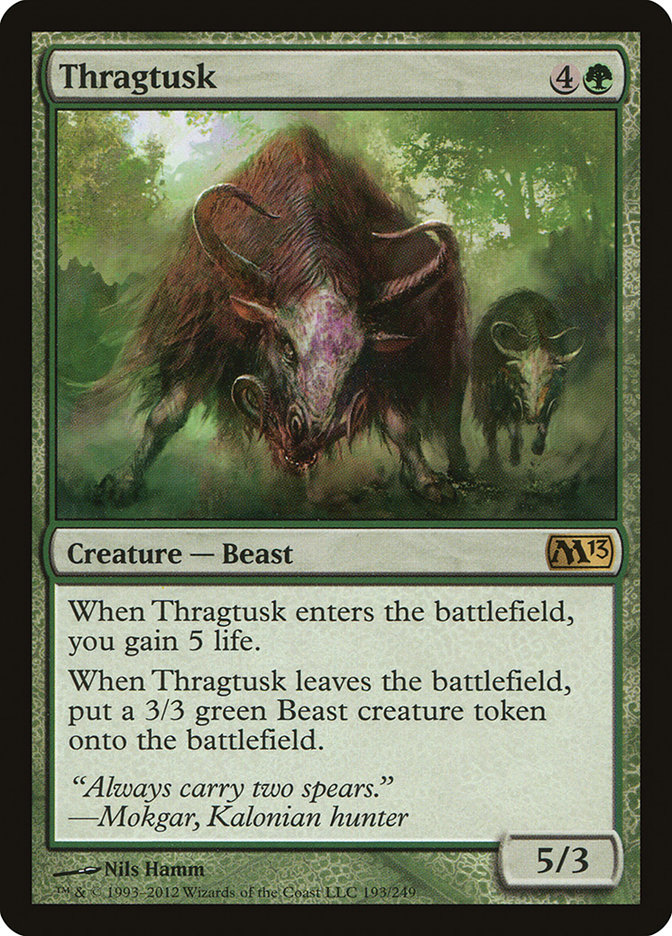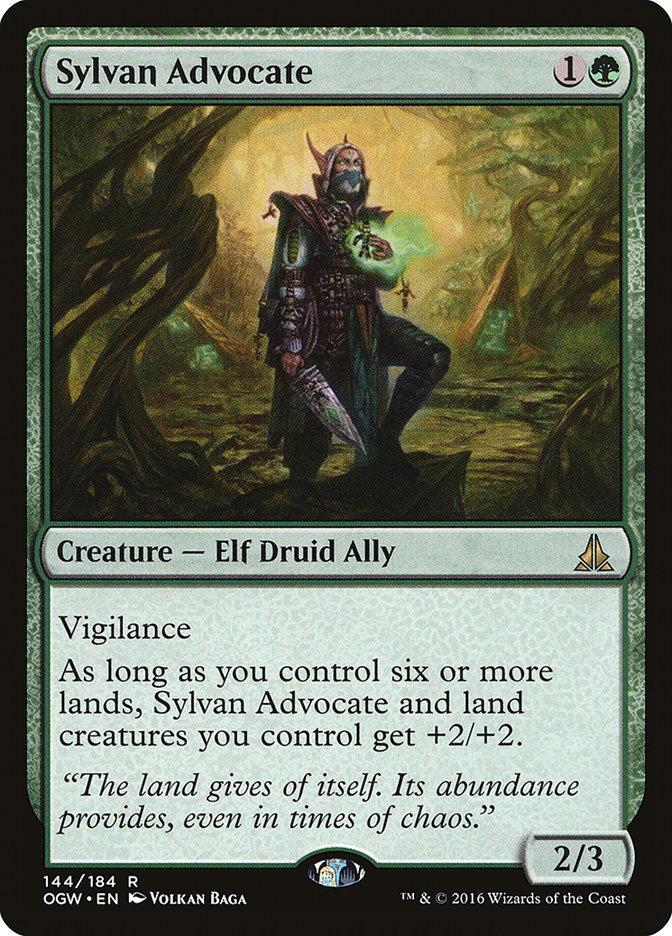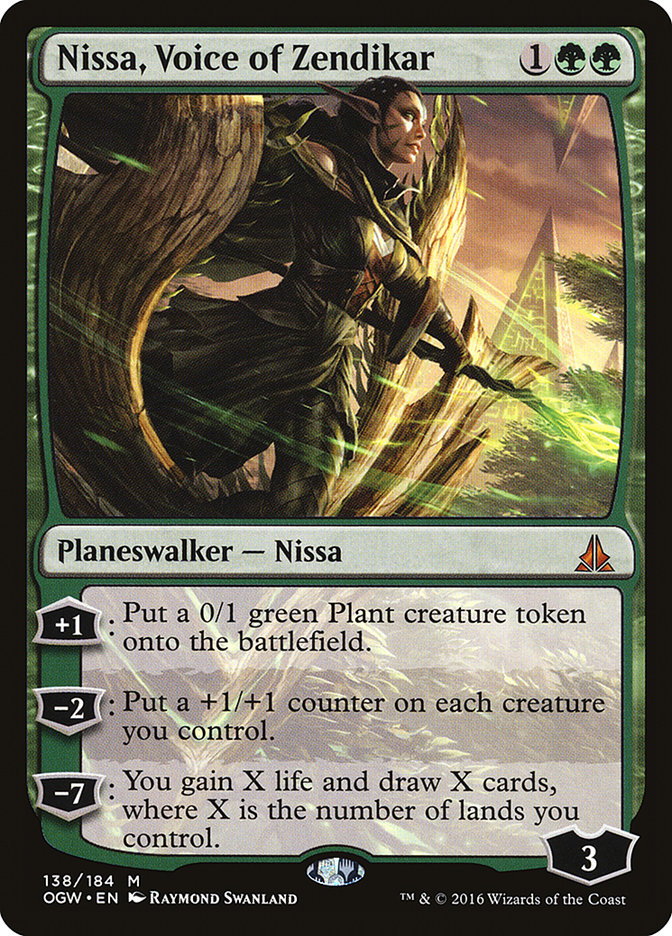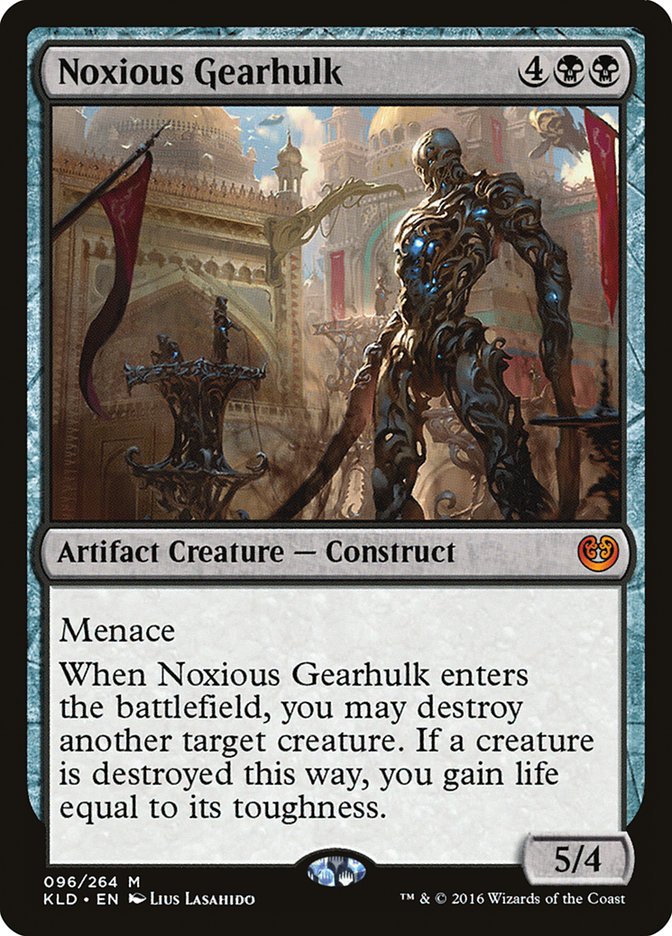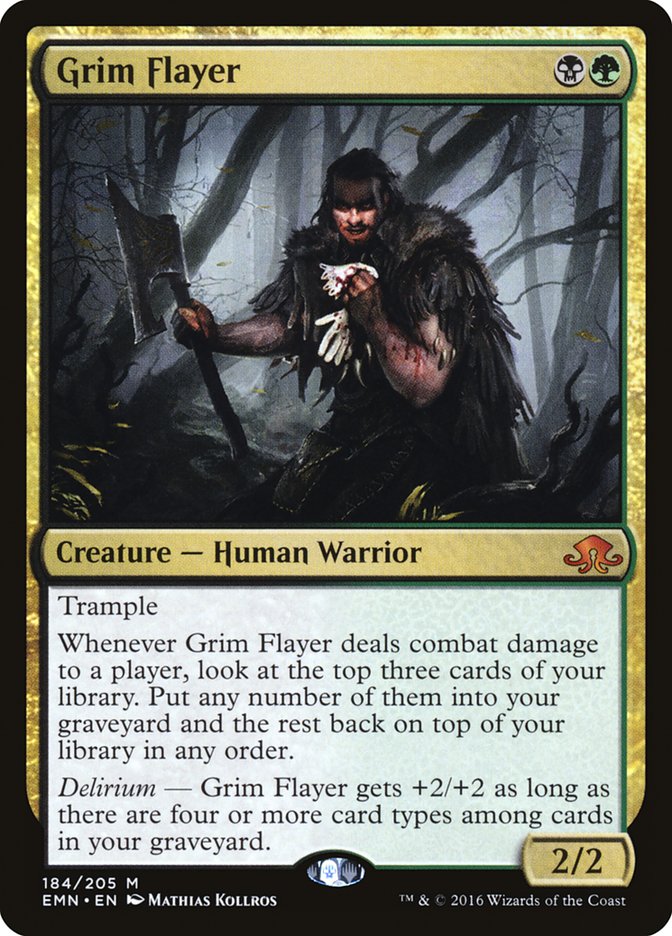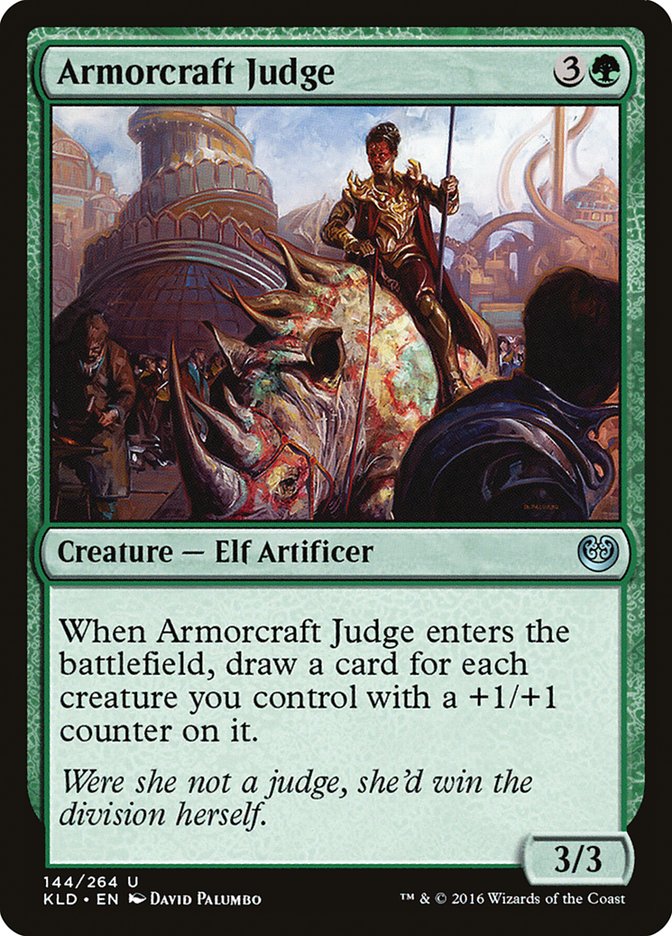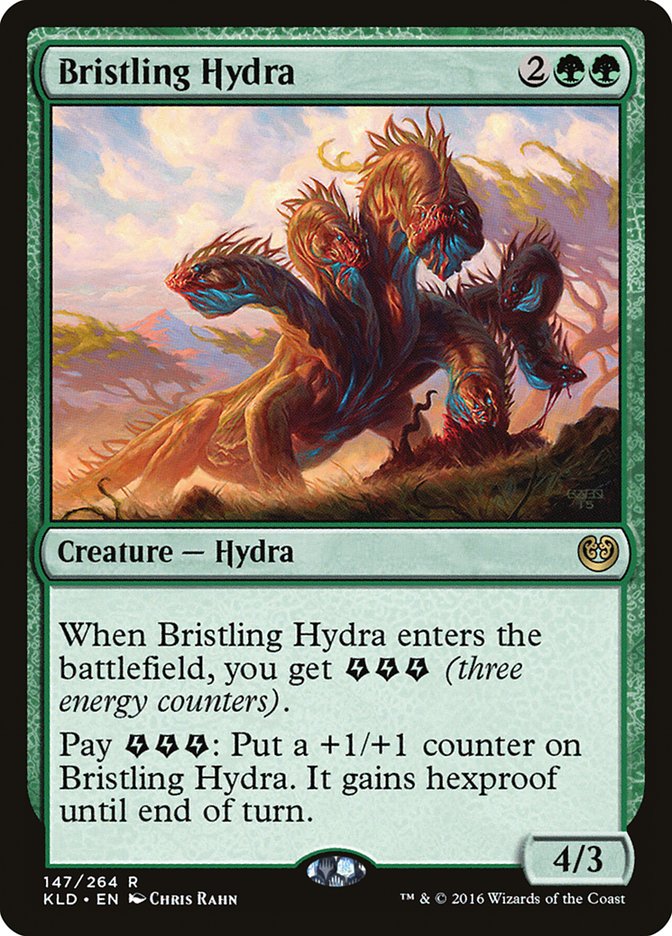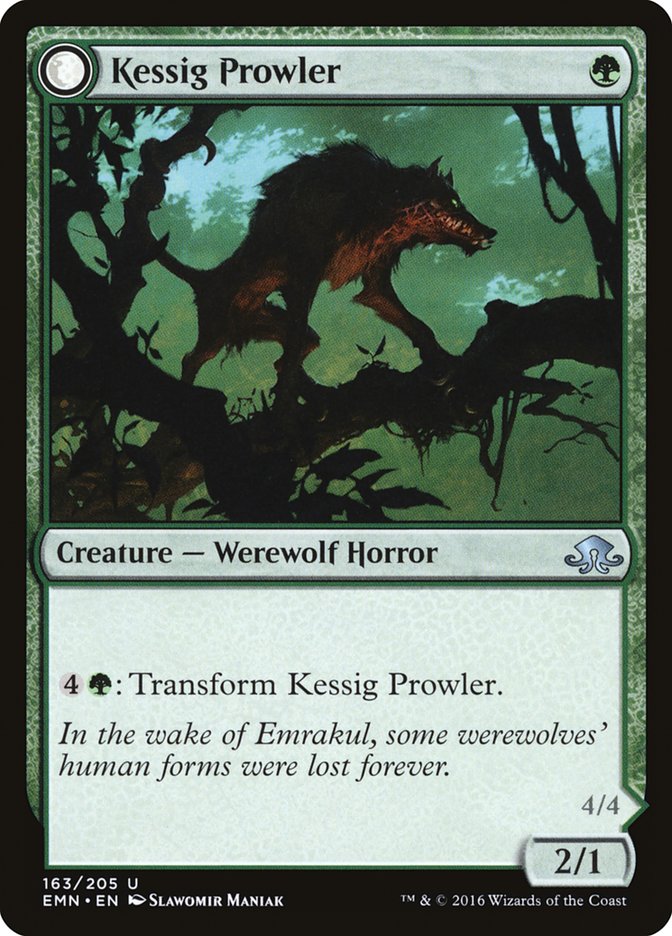Kaladesh is shaping up to be one of the most exciting and most powerful sets in not only recent memory but in Magic’s history. I haven’t been more excited for a set since Ravnica. Not Return to Ravnica. The original Ravnica. The flavor of Kaladesh is incredibly evocative and comes through so cleanly in the cards and mechanics of the set and those mechanics are very tough to evaluate which makes the set more interesting for deck builders.
However, at the risk of sounding hyperbolic, there is one card spoiled so far that I see a lot of players glossing over that they absolutely shouldn’t. It’s a card that encapsulates the blend of raw power, efficiency, and versatility that has come to define Magic in the current era; it just doesn’t quite look like it on paper.
That card is Verdurous Gearhulk.
No, not the Gearhulk that looks like a Shriekmaw on steroids. Not the one that comes with a Tragic Arrogance built in. Not even the one that reminds you of Snapcaster Mage. It’s the green one that excites me the most.
The entire Gearhulk cycle comes with a lot of hype, especially since they are so reminiscent of the Titans from Magic 2011. These big creatures come with a powerful enters-the-battlefield ability so their presence is made known immediately.
In case you’ve been living under a rock for the last five or so years and completely missed the aforementioned Titans, Thragtusk, and Siege Rhino, the big, efficient creature with an immediate impact on the game state is a pretty safe bet to see significant Constructed play, and this cycle is no exception.
I expect these cards to see play, and in some cases a lot of play. Cataclysmic Gearhulk and Noxious Gearhulk are both great cards, and the Magic-playing masses have identified them as such. Torrential Gearhulk has even, in my opinion, been overrated, since its value is tied to the power of the playable instants in the format, and flashing back a cheap spell with it isn’t ideal.
Meanwhile, poor old Verdurous Gearhulk is over here offering you a solid body and an effect that at least rivals and in most cases surpasses an activation of Gavony Township, and the best people can come up with is a halfhearted comparison to Wolfir Silverheart. You’d think after the last six months green would get a little respect, but some people never learn.
Verdurous Gearhulk’s baseline stats are already impressive. With no help at all you get a five-mana 8/8 trampler. Spectral Force was a significant player in its day, and while things have certainly changed in the years since Time Spiral was released, it’s still clear that that is a solid rate for a creature. It will be resilient to plenty of removal spells and it can dominate the battlefield on pure stats if allowed to stick around.
And that is the baseline scenario.
In the vast majority of cases you are going to distribute the counters to other creatures, allowing you to generate up to four extra power to use that turn in combat and likely invalidate a blocker or two in the process. Suddenly your opponent’s Sylvan Advocate is rendered completely useless as you put two counters apiece on your Tireless Tracker and your own Sylvan Advocate. Sure, your Verdurous Gearhulk now dies to more things, but what it leaves behind is substantial. And if your opponent uses their removal on the creatures you pumped, then you still have a 4/4 trample creature.
Verdurous Gearhulk is part Wolfir Silverheart, part Ulrich of the Krallenhorde, part Gavony Township. In fact, it’s the best parts of all those cards. When you add that degree of optionality to a card, it quickly eclipses any of its constituent parts in power level, because it only serves a given purpose when that purpose is relevant to the game.
By that I mean Verdurous Gearhulk will be an 8/8 when you need an 8/8, it will make two giant bodies to get past blockers when your opponent has blockers, and it will spread counters on your team when you need to go wide. When any of those effects is negligible, you can choose to use the card in a different way. That makes it better than any of those effects would be individually.
Most importantly, its versatility makes combat a nightmare for your opponent, specifically blocking. You simply can’t reliably leave a creature back to block when your opponent’s creatures can suddenly become huge. Even if you untap with some removal, it needs to be powerful enough to deal with large creatures and cheap enough to let you stabilize what is undoubtedly a lopsided battlefield before you die.
And if you instead hold your removal spells to pick off the pumped creatures at instant speed, your opponent has the option of simply attacking first, eventually forcing you to act with your removal spells, thus allowing them to land a full-value Verdurous Gearhulk anyway. The other Gearhulks are powerful, but they are much more straightforward in their effect. It’s only the green one that offers this level of versatility.
So we’re done here, right? See you next week and all that jazz.
Oh…you wanted some decklists to see how you can make use of this card that I just spent 1000 words hyping? Can I interest you in some frozen yogurt instead?
Frozen yogurt is just crappy ice cream for yuppies, you say? Okay, then.
The most obvious home for Verdurous Gearhulk is G/W Tokens. With Hangarback Walker rotating along with Evolutionary Leap, being able to play a controlling game is going to be difficult, so let’s look to be more aggressive.
Creatures (17)
Planeswalkers (8)
Lands (26)
Spells (9)

You’ll recall that the original lists of this deck played Thraben Inspector because it helped you maintain parity with Humans, which was quite popular at the time. Here it can serve the same purpose, but it mainly lets you establish a quick battlefield presence, setting you up to maximize Nissa, Voice of Zendikar and Verdurous Gearhulk.
Nissa, Voice of Zendikar and Verdurous Gearhulk are best friends, since the former creates tokens to pump with the latter as well as providing you with another Anthem effect for your creatures in the (not-so0rare) case that you are very unlucky and don’t draw your bomb mythic five-drop.
Fortunately this deck is stacked with rares and mythics, so you’re not lacking on power, but whereas before you would often opt to grind people out with Hangarback Walker, Archangel Avacyn, and Evolutionary Leap, now you are trying to go wide and press your advantage with Verdurous Gearhulk. The natural curve of Oath of Nissa / Sylvan Advocate / Nissa, Voice of Zendikar / Gideon, Ally of Zendikar / Verdurous Gearhulk is still terrifying, especially since it represents a total of 22 damage, provided you use Nissa’s -2 ability twice.
That 22 damage is also done while generating four sizable creatures and two planeswalkers, which are impossible to answer while retaining card parity, giving you an aggressive deck that will be quite resilient against midrange and control archetypes. The rotation of Collected Company means that Spell Queller won’t come around as often to ruin your day, and the added aggression helps you to end games before Emrakul, the Promised End can ruin the day of everyone in the Multiverse.
You can still transition into a more controlling deck with Cataclysmic Gearhulk and Planar Outburst as sweepers and Tireless Tracker drawing cards, but I expect Kaladesh Standard to be quite fast, so that plan is likely reserved for aggressive Humans decks and things like red aggro. Fragmentize helps out in these matchups if anyone gets fancy with powerful Vehicles like Fleetwheel Cruiser and Smuggler’s Copter, and I expect they will. (Don’t worry, though; they’re just compensating.)
But G/W Tokens is old hat. This is a new format and I want to do something new and exciting. A few years ago, Verdurous Gearhulk would’ve been paired with Elvish Mystic and the like so it could come down earlier and turn your dead mana creatures into relevant threats. They don’t make mana creatures like they used to, but we can still accelerate our Gearhulk onto the battlefield with Eldrazi Scions. Scion Summoner, Eldrazi Skyspawner, and Catacomb Sifter all represent reasonable cards that can let our powerful five-drop enter the battlefield ahead of schedule or simply create multiple bodies to pump later on.
Of the three, Catacomb Sifter is easily the most powerful, so that’s where I gravitated:
Creatures (21)
- 4 Catacomb Sifter
- 4 Sylvan Advocate
- 3 Deathcap Cultivator
- 1 Tireless Tracker
- 1 Ishkanah, Grafwidow
- 4 Grim Flayer
- 3 Verdurous Gearhulk
- 1 Noxious Gearhulk
Planeswalkers (6)
Lands (24)
Spells (9)

This list is a bit slower than the G/W list, but in exchange it gets to take advantage of delirium. All the Gearhulks are artifacts, effectively adding another card type to your deck for free. The number of planeswalkers in the deck can help compensate for the lack of instants, and with six types overall, you should be able to achieve delirium often enough to turn on your cards.
For your efforts you are rewarded with Traverse the Ulvenwald, which helps to alleviate this deck’s natural mana problems from running plenty of double-colored cards in both its colors, and also gives you access to a nice toolbox of creatures. Ishkanah, Grafwidow has proven its worth in Standard since the release of Eldritch Moon, and here it serves to provide an army in a can for your Verdurous Gearhulks and Nissa, Voice of Zendikars to boot.
Noxious Gearhulk lets your Traverses access a removal spell while also giving you access to some lifegain against aggressive decks, which both significantly expand the utility of our toolbox for the low cost of one slot.
The last singleton creature, Voldaren Pariah, is an incredibly powerful effect that synergizes with our token makers, which makes its value as a singleton quite high. Still, it’s the card I’m most skeptical about and it narrowly lost a slot in the maindeck. But out of the sideboard it can be a game-breaker against creature decks where the battlefield is likely to stall.
The other delirium card this deck takes advantage of is Grim Flayer. Like Traverse and Ishkanah, this 2/2 trampler for two mana has proven effective in Standard, although it has also broken into Modern.
Here it serves as another aggressive two-drop, but its trample ability, which is typically poor until you hit delirium, is now greatly bolstered by our many pump effects. I can see you stacking counters on this creature against red and green decks and turning it into a huge creature that digs for the removal necessary to prevent an army of opposing creatures taking it down in combat.
It’s also the primary delirium enabler for the deck, so landing one early and using either planeswalker to force it through will likely be your best early curve. Following that up with a Verdurous Gearhulk and some removal should be enough to end plenty of games.
You can try to count Deathcap Cultivator as a delirium payoff, but it’s primarily serving as a mana creature and mana fixer. The fact that your pump effects and delirium can turn it into a relevant card in the late-game is quite nice, though, and that’s key to making decks with mana creatures operate through mana flood.
One thing I’m hoping for from Kaladesh is a cheap removal spell that is easier on the mana, but until the rest of the set is spoiled, it looks like Grasp of Darkness is the best option. Traverse the Ulvenwald is there to ensure we can cast it eventually, but casting it on-curve or as part of a double-spell turn will likely be difficult.
The last list I have is a bit more ambitious than the previous two, but sometimes I just can’t help myself.
Creatures (29)
- 3 Scion Summoner
- 4 Sylvan Advocate
- 2 Baloth Pup
- 3 Tireless Tracker
- 4 Kessig Prowler
- 4 Verdurous Gearhulk
- 4 Longtusk Cub
- 3 Armorcraft Judge
- 2 Bristling Hydra
Planeswalkers (4)
Lands (23)
- 19 Forest
- 4 Aether Hub
Spells (4)

This deck is clearly underpowered, but I can’t shake the feeling that a Hill Giant that draws two or more cards is a good card, and that’s exactly what Armorcraft Judge should be in this deck. Any curve with Nissa, Voice of Zendikar should be incredible, as should landing Armorcraft Judge after a Verdurous Gearhulk, although it’s likely overkill at that point.
Still, the remnants of any of these cards alongside Tireless Tracker and the Energy creatures from Kaladesh leaves you with plenty of +1/+1 counters to count. Where is a Hardened Scales when you need one, right?
Bristling Hydra is a solid threat on its own, dodging spot removal and applying plenty of pressure even in the absence of your payoff cards. The real sacrifice this deck makes in power comes in Baloth Pup and Kessig Prowler, which are simply there to provide cheap bodies. Endless One is a consideration, since it scales, but without Hardened Scales, casting it early as a 1/1 or a 2/2 is very underwhelming. Maybe this deck needs to play red to take advantage of Voltaic Brawler and other Energy cards, but balancing that with the +1/+1 counters theme is difficult for an aggressive deck. White would be a good option if there were some Constructed-playable support cards, but that just isn’t the case. As is, this one is likely a deck for the casual tables or an FNM where you want to change things up.
Green Deck Wins
Despite the lack of chatter I’m hearing about Verdurous Gearhulk, it’s currently preordering for more than any other card in the cycle, so perhaps everyone is just trying to keep the card quiet in the hopes of catching the metagame unprepared.
Oops. Sorry, guys and gals. But this card is too good to go by unnoticed. The artifact block may favor blue and red, but green isn’t going away anytime soon.


